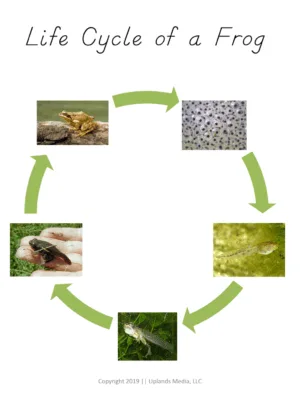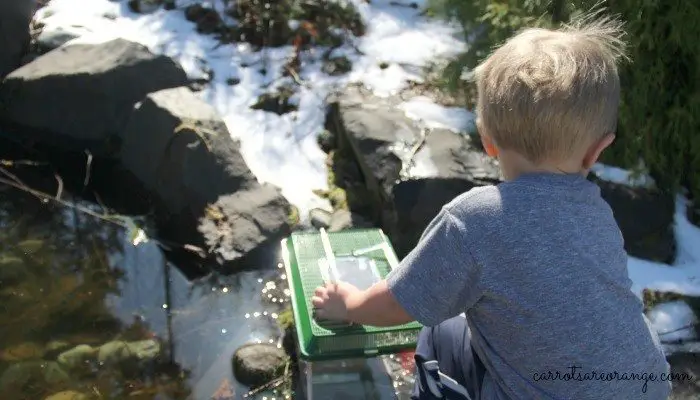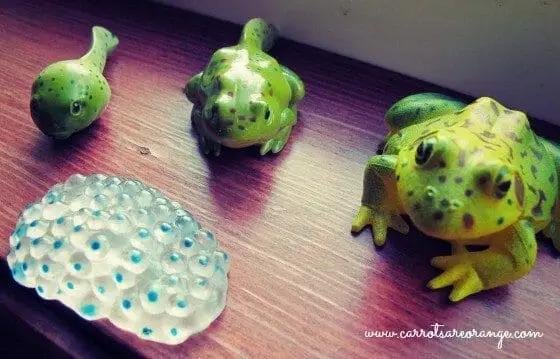Do your kids love frogs? Mine do! There are so many fun frog activities that you can do with your kids to help teach them about the life cycle. Kids love life cycle activities. Trust me!
From watching tadpoles grow into frogs to creating a pond ecosystem, to learning about camouflage – there is something for everyone! Please keep reading for some of our favorite frog activities for kids.
Frogs are fascinating creatures that undergo a remarkable transformation from eggs to tadpoles to fully grown adults. Understanding the stages of the frog life cycle can be a fun and educational experience for both children and adults.
In this post, we'll take a closer look at each stage of the frog life cycle and explore the amazing changes that occur along the way.
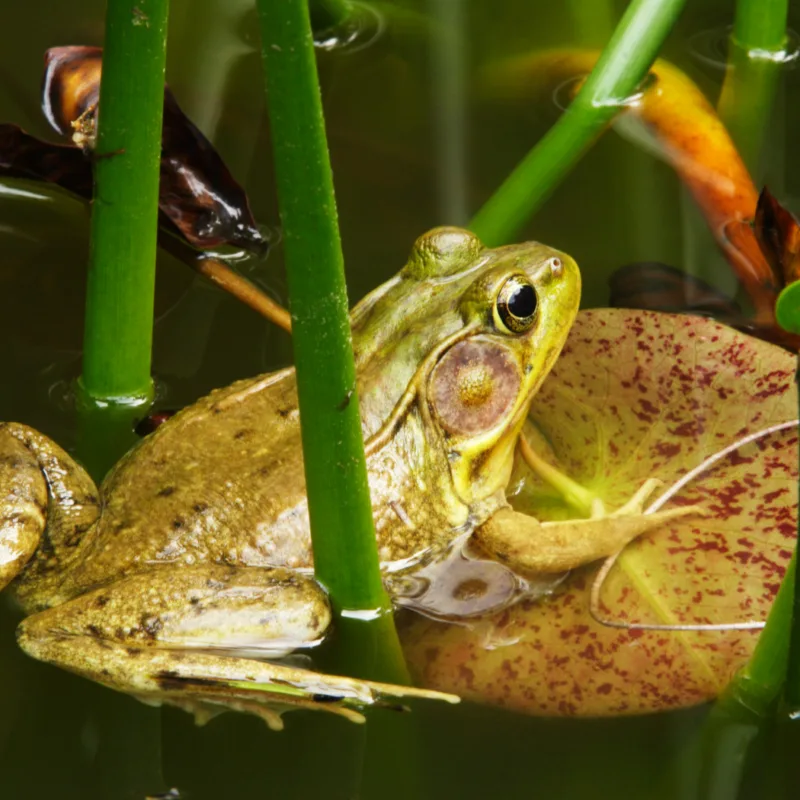
This post covers loads of frog life cycle activities. We were thrilled to find tree frogspawn in our pond because learning about the life stages of a frog is a critical point in a child's learning! The male frogs have been croaking up a storm in our forest in the evenings.
The rhythm is beautiful, but I wonder where they all hide during the day. In other words, the chorus sounds like one of the thousands.
I hope you enjoy the life cycle of a frog for kids' activities! These tadpole life cycle activities are great for toddlers, preschoolers, and kindergarteners and even include a life cycle of a frog worksheet!
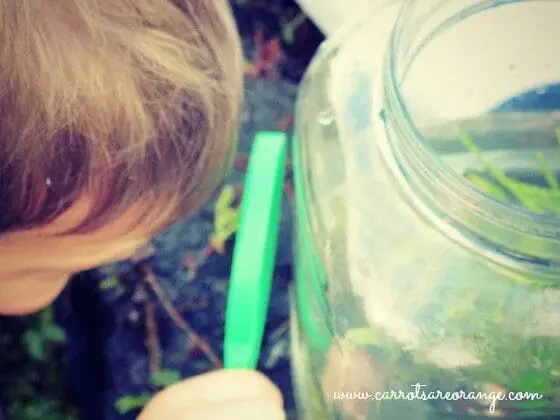
21 Frog Life Cycle Facts for Kids
- Frogs live in ponds, lakes, streams, and other bodies of water.
- They spend most of their lives in the larval stage (caterpillar), which looks very different from the adult form.
- The tadpole stage is also known as the aquatic phase.
- There are over 4,700 species of frogs in the world. However, Europe has only 45 species.
- Frogs absorb water through their skin, so they don't need to drink!
- Frogs can lay as many as 4,000 eggs in frogspawn.
- The eyes and nose of a frog are on top of its head so it can breathe and see when most of its body is underwater.
- Frogs have long back legs and webbed feet for jumping and swimming.
- Some frogs can jump up to 20 times their body length in a single leap.
- Frogs usually eat meat (bugs and worms) and swallow their food whole.
- The goliath frog from Cameroon in West Africa is the world's biggest frog. Their bodies can be one foot long.
- The smallest frogs in the world are less than half an inch long.
- Herpetologists study frogs and toads. Herpetology is the study of amphibians and reptiles.
- Frog bones form a new ring yearly when the frog is hibernating, like trees. Scientists can count these rings to discover the age of the frog.
- One type of desert frog can wait as long as seven years for water by surrounding itself in a transparent bag that becomes its first meal once the rain comes.
- Amphibians' eyes come in all shapes and sizes. Some frogs have square or heart-shaped pupils.
- Amphibians don't see color — they only see in black or white.
- The golden dart frog is the most poisonous frog on earth; one frog's skin could kill up to 1,000 people.
- The male Darwins Frog takes its mate's eggs into its mouth as soon as they show signs of life, and they stay there until they emerge as fully grown froglets.
- Frogs cannot live in the sea or in any salt water.
- Many of the most brightly colored tropical frogs are colored to warn predators that they are poisonous.
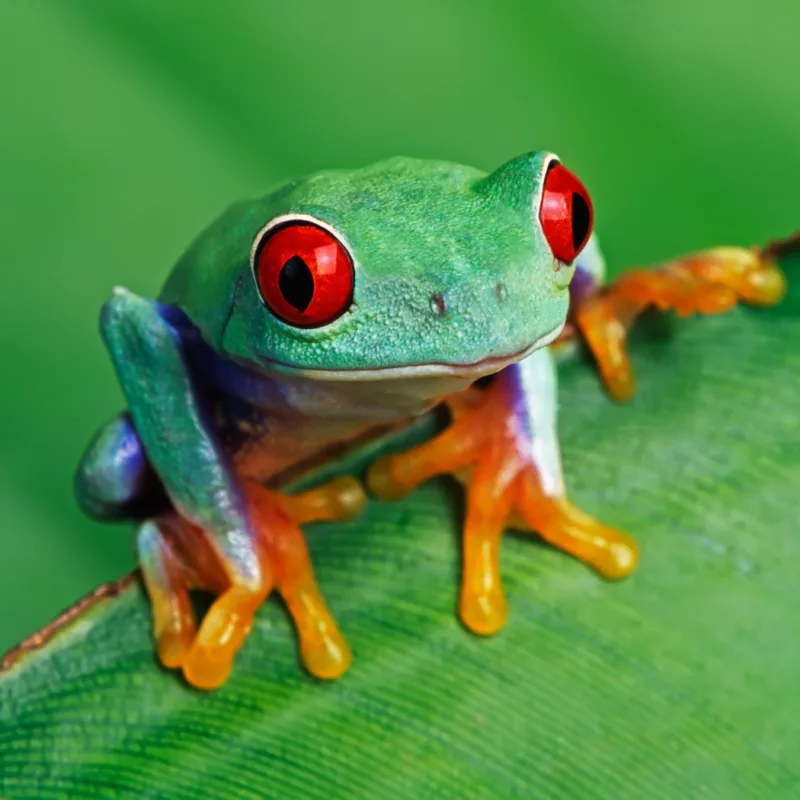
Types of Frogs
- Poison Dart Frog
- Glass Frog
- Fire-Bellied Toad
- Neobatrachians
- Mantellidae
- Golden Mantella
What is the Life Cycle of a Frog?
The life cycle of a frog has five stages. The stages of the frog life cycle are egg, tadpole, metamorphosis, and adult frog. The egg hatches into a tadpole, which then goes through metamorphosis and develops into an adult frog. During metamorphosis, the tadpole's tail shrinks and legs grow, and it develops lungs for breathing air instead of gills.
In-Depth Life Stages of a Frog
The Egg Stage
Eggs {or Frogspawn} are tiny and laid in thousands, typically in ponds or marshes.
The frog life cycle begins with the egg stage. Female frogs lay their eggs in water, usually in clusters or masses. The number of eggs laid can vary greatly depending on the species of frog, with some laying only a few dozen and others laying thousands.
The eggs are typically covered in a jelly-like substance that helps to protect them from predators and other environmental factors. The incubation period for frog eggs can also vary, with some hatching in just a few days and others taking several weeks.
The Tadpole Stage
Tadpole Stage – Tadpoles hatch from the eggs and live in the water using gills to breathe.
After the eggs hatch, the next stage in the frog life cycle is the tadpole stage. Tadpoles are essentially baby frogs that have hatched from eggs. They have long tails and no legs, and they breathe through gills instead of lungs.
Tadpoles feed on algae and other small aquatic organisms, and they spend most of their time swimming in the water. As they grow, they begin to develop legs and their tail starts to shrink.
Eventually, they will lose their gills and develop lungs, allowing them to breathe air. This marks the end of the tadpole stage and the beginning of the next stage in the frog life cycle.
The Metamorphosis Stage
During this stage, tadpoles begin to develop legs at this time however it still lives and breathes in the water.
The metamorphosis stage is the most dramatic and well-known stage of the frog life cycle. During this stage, the tadpole undergoes a complete transformation into an adult frog. The tadpole's tail shrinks and disappears, while its legs grow and its body shape changes.
The tadpole also develops lungs and begins to breathe air instead of relying on gills. This stage can take several weeks or even months, depending on the species of frog and environmental factors such as temperature and food availability. Once the metamorphosis is complete, the frog is fully grown and ready to live on land.
The Froglet Stage
Froglets are almost mature and still have a tail, but now breathe with lungs.
After the metamorphosis stage, the frog enters the young frog stage. At this point, the frog is still growing and developing, but it has all the characteristics of an adult frog. It has four legs, lungs for breathing air, and a fully developed digestive system.
The young frog will continue to grow and mature over the next few months, eventually reaching its full size and reproductive maturity. During this stage, the frog will also begin to explore its environment and develop its hunting and survival skills.
The Adult Frog Stage
Adult frogs have no tails (the tail is absorbed into the body) and continue to breathe with their lungs.
The adult frog stage is the final stage in the frog life cycle. At this point, the frog has reached its full size and reproductive maturity. Adult frogs are able to mate and lay eggs, continuing the cycle of life.
They are also fully adapted to their environment and have developed specialized hunting and survival skills. Adult frogs can live for several years, depending on the species and their environment.
Download Your FREE Life Cycle of a Frog Worksheet
Frog Life Cycle for Kids
The frog eggs are beautiful, with perfectly rounded black dots and jelly sacs. Frogs lay their eggs, so the sac attaches to a branch in our pond, which makes observing their growth all the more lovely.
Life Cycle of a Frog Video
My boys loved watching this video of a frog growing from egg to adult frog. Super cool!
Preschool Songs about Frogs
A classic song for kids!
The Little Green Frog song warms my heart and brings me back to when my boys were small.
Children's Books for Learning about the Frog
- From Tadpole to Frog by Wendy Pfeffer
- Frogs by Gail Gibbons
- From Tadpole to Frog
- Frog and Toad Spring
- National Geographic Readers: Frogs!
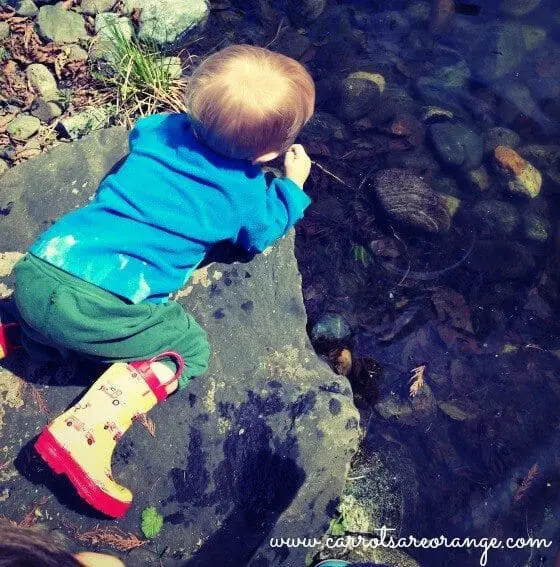
Activities for Learning about Frogs
- Habitat for your eggs or tadpoles
- Pond or Find a Source (we collect eggs into jars to give to classrooms and friends to care for and to release)
- Magnifying Glass for Kids
- Life Cycle of a Frog Replicas
- Tadpole/Frog Reversible Puppet
- Five Little Speckled Frogs Felt Board and Song
Life Cycle of a Frog Craft
Materials for the Life Cycle of a Frog Craft:
- Large paper plate
- Small paper plate
- Life cycle printout
- Colored Pencils
- Paper Hole Punch
- Scissors
- Markers
Classroom Life Cycle of a Frog Activities
- Lily Pad Math by No Time for Flashcards
- Paper Plate Lifecycle Craft (here is a free printable of the lifecycle stages)
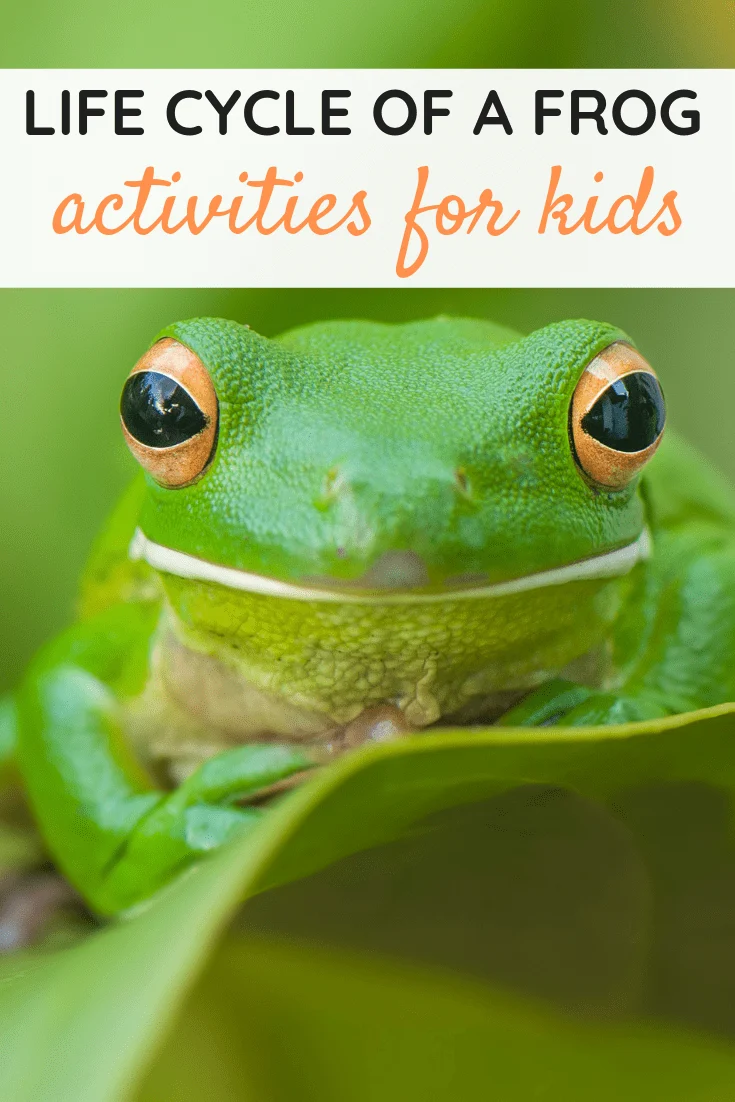
- Movement Activity with the child transforming from an egg to an adult frog
- Frog Sequencing Cards
- Picture-to-Object Matching Work
- Simple Observation of a tadpole to adult frog
- Drawing & Coloring Observations
- Use the Montessori Zoology Puzzle to trace, pin-poke, and color the parts of a frog.
Frog Activities Pack
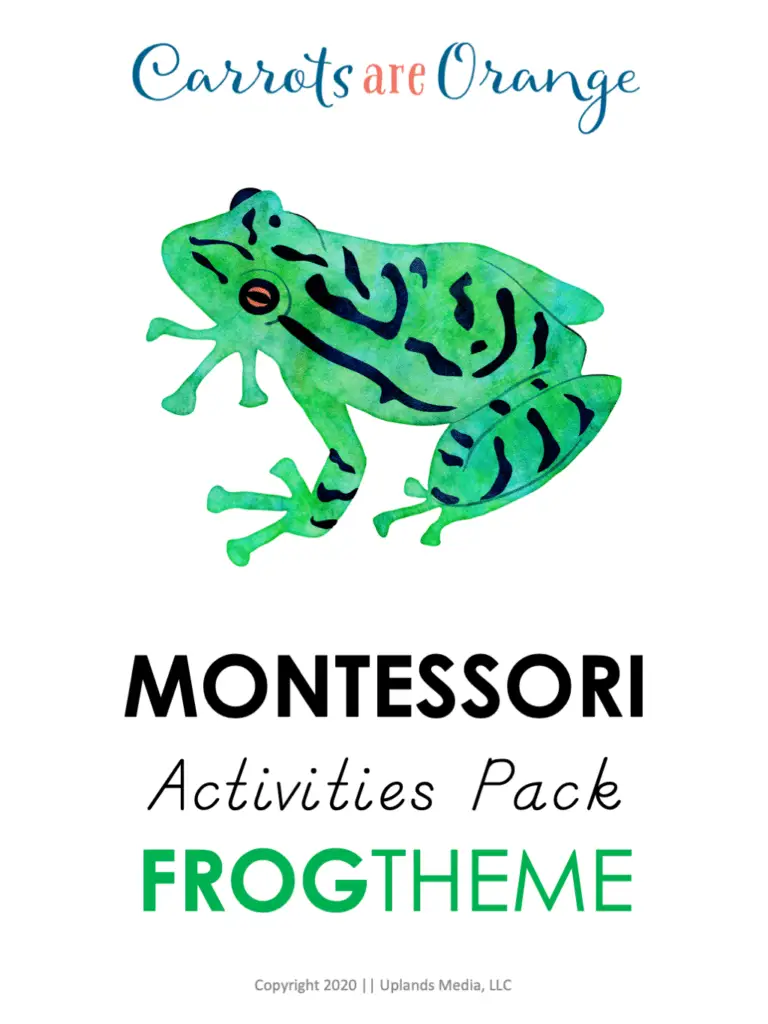
This bundle includes 70+ pages for frog learning.
Included in this bundle of over 70+ pages are the following:
- 8 cutting & tracing strips
- Parts of the Frog 3 Part Cards
- Life Cycle of a Frog sequence cards
- Frog Sentence Strips with Matching Images
- Math Counter Cards
Printables are in D'nealian, Century Gothic regular, and Dotted fonts.
Want More Life Cycle Activities and Crafts? Click below!
Have fun!
Marnie

